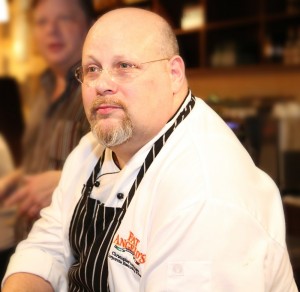World Wildlife Fund for Nature (WWF) proposes an innovative solution to the threatened supply of wild-caught seafood: change the way consumers select fish. But culture will be an ambitious thing to alter, cautions one chef.
 Environmental group WWF raised the issue of why consumers still choose their fish based on species. Apparently, it believes that this simple mindset adjustment can save the dwindling stock of endangered commercial fish.
Environmental group WWF raised the issue of why consumers still choose their fish based on species. Apparently, it believes that this simple mindset adjustment can save the dwindling stock of endangered commercial fish.
“Beef is really drawn from over 800 breeds of cattle – ranging from tough Texas Longhorn to drought-resistant Brahman bull. Pork is drawn from any of the 80 or so types of domesticated swine. Chicken comes from nigh-countless breeds of fowl. While meat taste and texture varies dramatically per breed, classification remains the same,” Gregg Yan, in his article Future Fish. “However, seafood has always been marketed by species. We order two kilograms of Tilapia. Six ounces of Bluefin Tuna. A tiny ounce of Chilean Seabass. Never do we ask for just fish meat.”
The proposal cited popular fish like the Chilean Seabass, which is simply a market name and not a specific fish. The most preferred species for this market name is Patagonian Toothfish, already endangered in areas like Chile. However, the Ross Sea Antarctic Toothfish has also been marketed as Chilean Seabass because of its similar gastronomic profile. By focusing seabass catch on another species of the same profile, the Patagonian Toothfish in Chile can recover after a certain period of time.
If fish meat were to be classified based on similar profiles, for instance, according to fillet cuts as red meat, white meat, or pink meat, it could place a higher market value on least noticed commercial fish. “Learn to widen the base,” said Gregg Yan, proponent of the Better Choices movement of WWF-Philippines, reflecting the same call by chefs.
 Noble as the idea is, Christopher Gallaga, the executive chef of Fat Angelo’s, cautioned that “top-down doesn’t usually meet much success.” He said, “You can’t dictate to people how you are going to classify things very easily. If you do, you have to invest in a long term.”
Noble as the idea is, Christopher Gallaga, the executive chef of Fat Angelo’s, cautioned that “top-down doesn’t usually meet much success.” He said, “You can’t dictate to people how you are going to classify things very easily. If you do, you have to invest in a long term.”
In 1987, at the height of public concern on cholesterol, the U.S. National Pork Board launched a similar campaign to shift the negative consumer perception on pork. A massive advertising program dubbed pork as “the other white meat”, highlighting its health benefits that didn’t go far from what real white meats can offer.
“For 10 years, nobody took them seriously. Because that’s cultural; it’s very hard to change that from top-down,” observed Gallaga. However, the movement claimed there was a subsequent rise of pork consumption per capita after rolling out the campaign. It didn’t come cheap and required an initial USD7-million budget from the U.S. Federal Government in 1987. Now running as “Pork. Be Inspired”, the campaign is continuously sustained by taxpayers’ money.
WWF’s Better Choices campaign on sustainable seafood is highly media-driven. Every now and then, stories are printed about places where the movement has been getting gradual progress such as Palawan and Ilocos Norte. And like any media promotional program, it is difficult to measure quantitatively results. Yan knows this, but he has faith on small steps. “Culture has always been difficult (to deal with),” he said. But, “Cultures can change…humans have to evolve too.”



